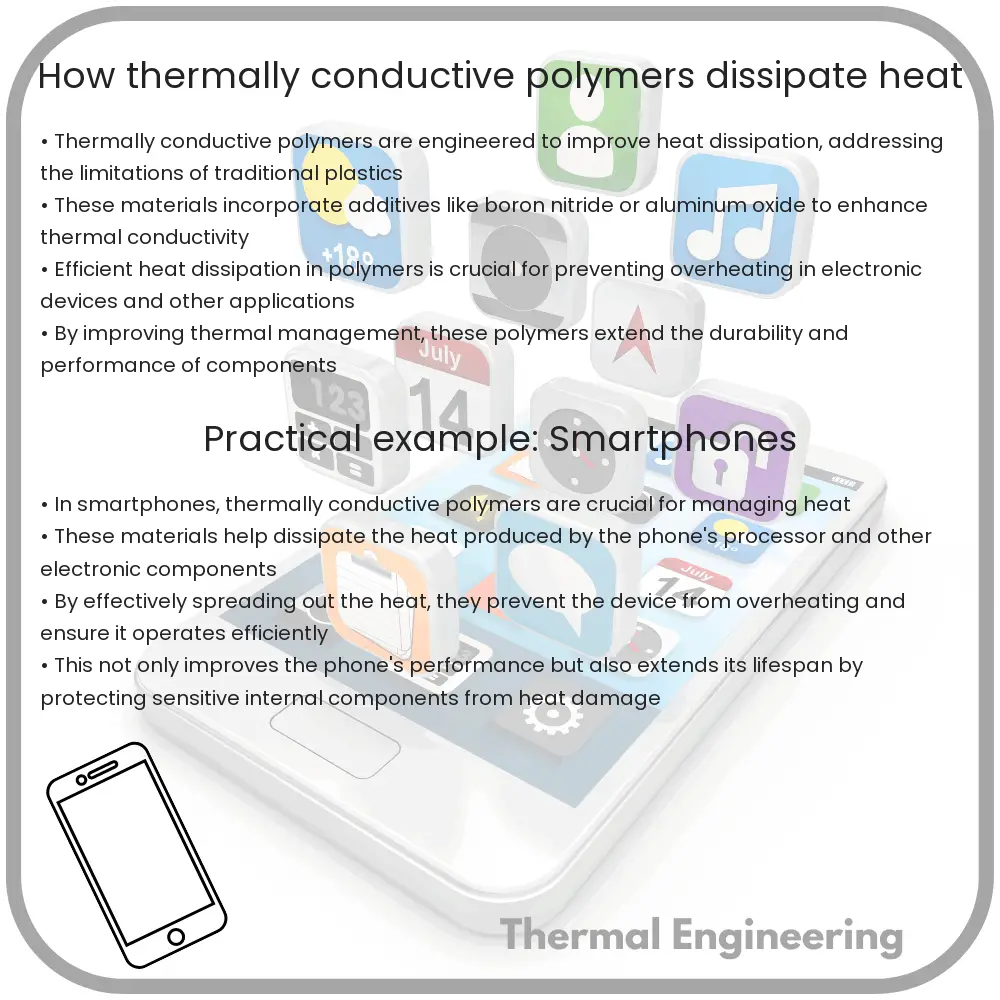Learn how thermally conductive polymers enhance heat dissipation, their role in industry, and the technology behind their design.

Understanding How Thermally Conductive Polymers Dissipate Heat
Thermally conductive polymers are materials specifically engineered to conduct heat effectively. They stand in contrast to traditional plastics which are generally poor conductors of heat, making the thermally conductive variants highly valuable in various industrial applications including electronics, automotive parts, and heat exchangers. In this article, we will explore the fundamentals of how these polymers work to dissipate heat, contributing to more efficient and safer operations in various devices.
Basics of Thermal Conductivity in Polymers
Thermal conductivity is a measure of a material’s ability to conduct heat. It is typically denoted by the symbol ‘k’ and measured in Watts per meter-Kelvin (W/m*K). In most organic polymers, the intrinsic thermal conductivity is low, generally around 0.1 to 0.5 W/m*K. This low conductivity is due to their molecular structure and the lack of free electrons which are primarily responsible for heat conduction in metals.
Thermally conductive polymers are engineered by integrating materials that have higher thermal conductivity into a polymer matrix. These materials can include metals, ceramics, or carbonaceous materials like graphite and carbon nanotubes. The choice of material depends on the desired properties of the final product, such as thermal conductivity level, mechanical strength, and electrical conductivity.
Dispersion of Heat Through Conductive Fillers
The key to enhancing the thermal conductivity of a polymer is the effective incorporation and distribution of conductive fillers within the polymer matrix. The fillers form a network through which heat can travel more efficiently than through the polymer alone. The efficiency of heat conduction in these composites depends on several factors:
- Filler Material: High thermal conductivity materials like boron nitride, aluminum nitride, or carbon fibers are common choices.
- Filler Shape and Size: The aspect ratio (the ratio between the length and diameter) and particle size of the filler influence how well heat is conducted across the polymer. Higher aspect ratios generally enhance thermal conductivity.
- Filler Distribution and Alignment: Uniform distribution and alignment of fillers in the direction of heat flow enhance conductivity. Non-uniform distribution can create bottlenecks that hinder heat flow.
- Interfacial Resistance: Heat must be transferred from the polymer matrix to the filler and then through the filler network. High interfacial resistance can impede heat flow, reducing the effectiveness of the composite.
Applications and Advantages
Thermally conductive polymers are increasingly used where heat dissipation is critical to device performance and longevity. In electronics, for example, these polymers can help manage the heat generated by components, thereby increasing their reliability and performance. Automotive parts made from thermally conductive polymers can withstand high temperatures and hence perform better and last longer.
The advantages of using thermally conductive polymers include:
- Weight Reduction: Polymers are lighter than metals, which is valuable in applications like aerospace and automotive where weight is a concern.
- Corrosion Resistance: Unlike metals, polymers are resistant to corrosion.
- Ease of Manufacturing: Polymers can be molded into complex shapes, which can be advantageous in manufacturing.
In conclusion, thermally conductive polymers represent a significant advancement in materials science, providing new solutions for heat management in engineering applications. Their ability to combine thermal conductivity with the inherent benefits of polymers paves the way for innovative uses across various industries.